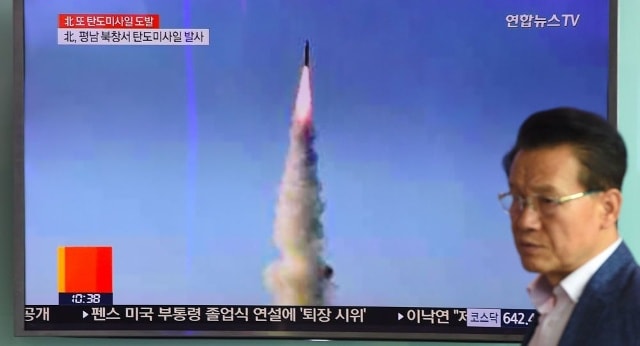Why did Russia deny that North Korea successfully launched an intercontinental ballistic missile?
While Russia and China denied it, the US, Japan and South Korea all confirmed that North Korea had successfully test-launched the Hwasong-14 intercontinental ballistic missile (ICBM) for the first time on July 4. So what caused Russia to deny that North Korea had launched an ICBM?
 |
Sharing with The Diplomat magazine, a source from the US government said that the Hwasong-14 missile has a range of 7,500 - 9,500 km. With this range, the Hwasong-14 can attack many major US cities on the West Coast such as Seattle, San Francisco and Los Angeles.
However, Russia has denied that North Korea successfully launched an ICBM. This is also the reason why Russia denied the statement of the United Nations Security Council (UN) last week.
For its part, China said it had "not received any reports" regarding North Korea's Hwasong-14 launch. Beijing also did not publicly announce that North Korea had launched an ICBM. Instead, the Chinese Foreign Ministry stressed that it "will seek further information."
According to National Interest magazine, immediately after North Korea tested the Hwasong-14, sources from the US, Japan and South Korea published information with large differences in the missile's range, altitude and flight time.
For a long time, when testing long-range missiles, North Korea has always chosen a launch angle that does not fly over neighboring countries. Previously, in 1998, North Korea tested the Taepodong-1 missile, but the missile flew over Japanese territory. But since 2006, North Korea has tried to choose a launch angle that, although still facing east, does not fly over Japanese territory.
According to the parameters confirmed by the US, South Korean and Japanese militaries, in the launch on July 4, the North Korean missile flew 935 km at an altitude of more than 2,800 km in a period of 37 minutes. Therefore, if this missile was launched on a standard trajectory, it could fly 5,500 km. With this distance, it can be determined that this is an ICBM.
The Hwasong-14 is identified as a liquid-fueled missile. In addition, North Korea may have stopped the rocket engine earlier than planned to avoid the missile flying over Japan or falling into Japan's exclusive economic zone. This is also the reason why the US determined that the range of the North Korean missile was longer than experts predicted. Even about 70 minutes before North Korea launched the missile, the US observed that Pyongyang placed the Hwasong-14 missile on a launch pad near Pukchang airport.
But after studying data from the early warning radar system, Russia still asserted that North Korea did not launch an ICBM. Russian media cited Russian intelligence assessments as saying that the North Korean missile launched on July 4 only flew 510 km at an altitude of 535 km and for a period of 14 minutes. With this range, Russia believes that North Korea tested the Pukkuksong-1 submarine-launched ballistic missile (SLBM) or the Pukkuksong-2 medium-range ballistic missile (MRBM).
After comparing the missile's trajectory, Russia confirmed that North Korea's July 4 launch was only an intermediate-range ballistic missile (IRBM). According to the definition in the Intermediate-Range Nuclear Forces (INF) Treaty, IRBM has a range of 500 - 5,500 km. According to the US government's definition, IRBM is a missile with a range of 3,000 - 5,500 km./.
According to Infonet
| RELATED NEWS |
|---|


